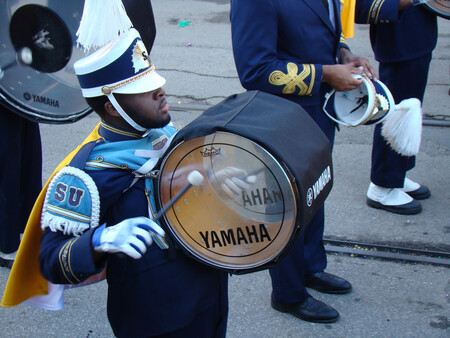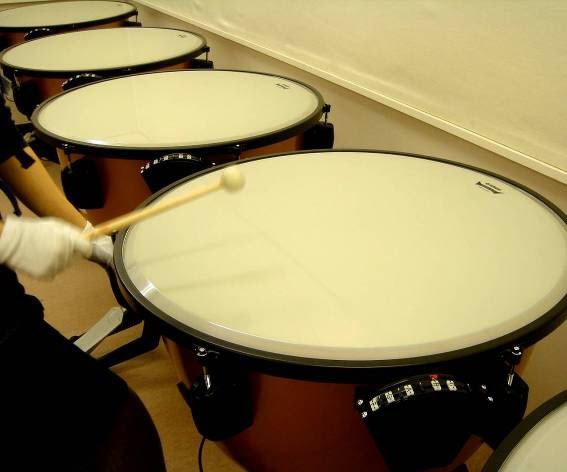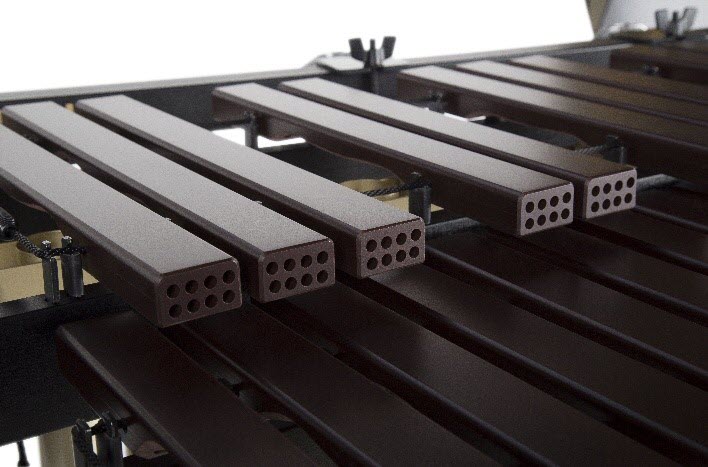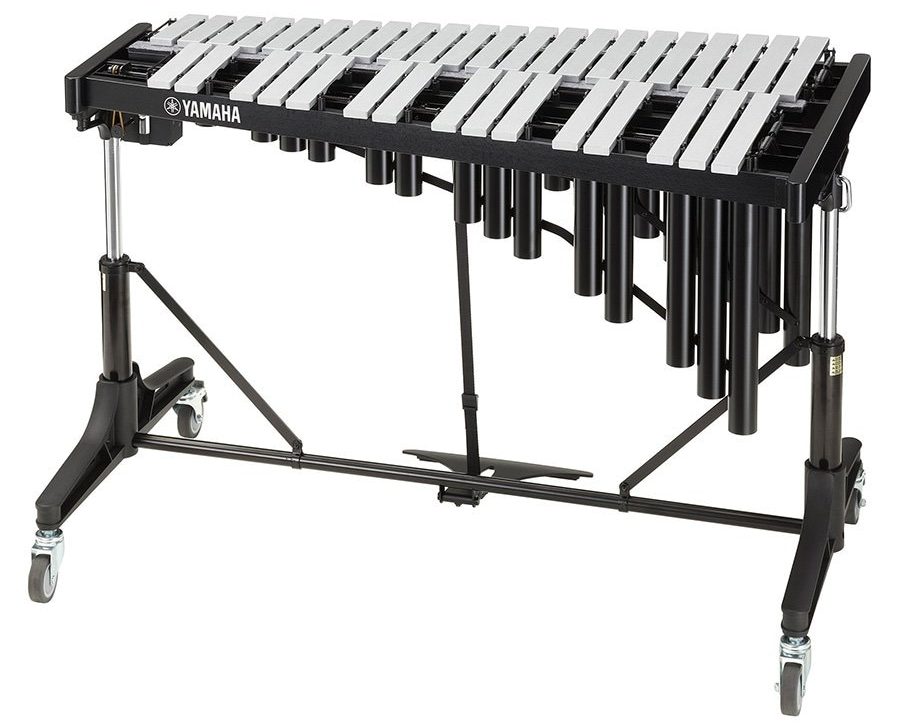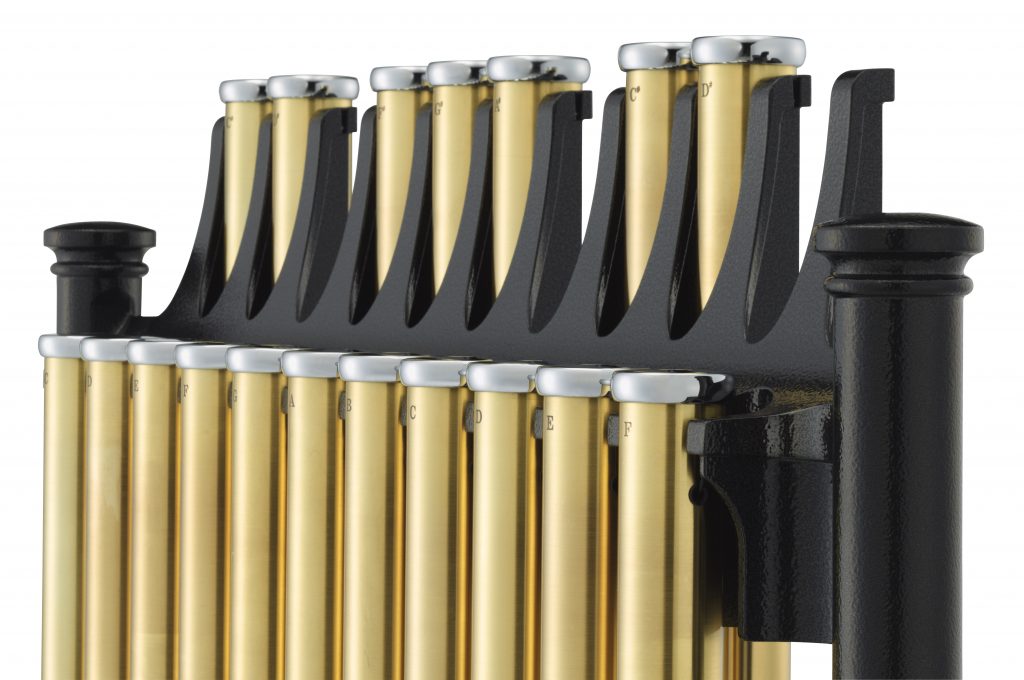Anatomy of a Vibraphone
What are the components that go into vibes?
The vibraphone (also known as the vibraharp or vibes) is the most recent addition to the lineup of orchestral percussion instruments, with its early beginnings dating back only to the 1920s vaudeville era.
The vibraphone can produce a variety of timbres, from dark and mellow to shiny and bright. The sound comes from a series of tuned tone bars being struck by mallets, with a general range of three to four octaves, depending on the model. Aluminum is used for these bars because it has a much longer decay time than the wood or synthetic wood type product used in marimba or xylophone bars. Metal resonators (sometimes called resonator tubes or resonator pipes) are suspended beneath the tone bars, with the length of each resonator varying depending on the pitch of the tone bar; the lower the note, the longer the resonator.
One of the most distinctive aspects of the sound of a vibraphone comes from motor-driven rotating disks (called “fans”) situated at the top of each resonator. When engaged, this causes a small fluctuation in pitch, resulting in a vibrato effect (hence the name “vibraphone”), along with some volume change, resulting in a tremolo effect. As the motor speed is adjusted from slow to fast, these effects become more pronounced.
Here’s an annotated illustration of a typical vibraphone, followed by a description of the main components in alphabetical order:

Casters. These allow for easy transport and can be locked for stability.
Controller. This provides the user controls for the motor. A quiet motor with silent pause and fan speed slider controls allows musical expression without unwanted noise. Some controllers offer a “memory pause” feature that remembers where the fans are when you turn on the motor so that they stop or start in the same place when the motor is paused or removed from pause.
Driver. Another name for the motor that drives the fan belts.
Fan Belt. A rubber belt that rotates the resonator fans.
Frame. A durable frame with horizontal legs is best for stability, and therefore playability. In some vibraphones, the frame is height-adjustable, allowing you to set the most comfortable playing position.
Pedal. Similar in function to a sustain pedal on a piano, its wide surface allows pedaling of the instrument from all playing positions on the keyboard.
Pedal Stay. Stabilizes the frame and holds the pedal in place for easy movement.
Resonators. The length of these metallic tubes is specific to each note, thus optimizing the projection of each tone bar.
Tone Bars (Natural / Accidental). These are made of aluminum and come in various finishes, most usually anodized matte silver, glossy gold or matte gold. The bar sizes also vary. Non-graduated bars help to keep vibraphones compact, while thicker bars allow for more projection and full tone.
Here are some additional considerations when it comes to the care and maintenance of your vibraphone:
– Never strike the tone bars with glockenspiel mallets or any other solid objects. Doing so can dent or scratch the tone bars or alter the bar pitch.
– When moving a vibraphone, do so gently, avoiding shocks and impacts. Ensure that the power adapter is disconnected, and the caster stoppers are unlocked. Lift the instrument slightly whenever moving it over surfaces that are not smooth or flat.
– When transporting a vibraphone by car, first dismantle the entire instrument and pack it securely in a soft case. Be sure to always transport the bars in a separate bar bag.
– Tone bars can be cleaned using a silicone cloth or any soft, dry cloth. Stains that are still visible may be wiped off with a small amount of ethyl alcohol applied to a soft cloth. Never use thinner, benzene or a wet cloth.
Also check out our blog posting What’s the Difference Between Vibraphone, Glockenspiel and Chimes?
Click here for more information about Yamaha vibraphones.











